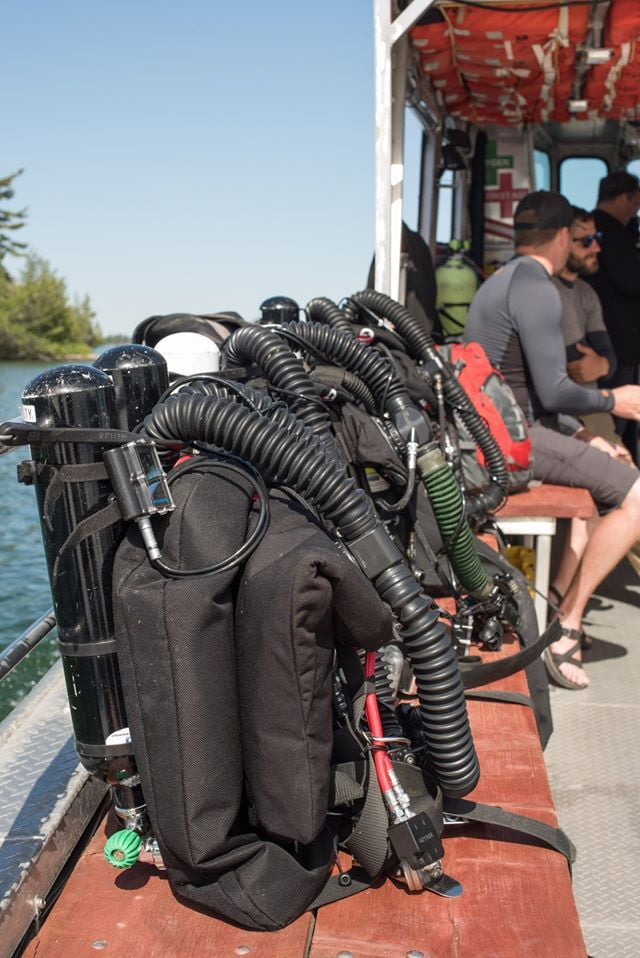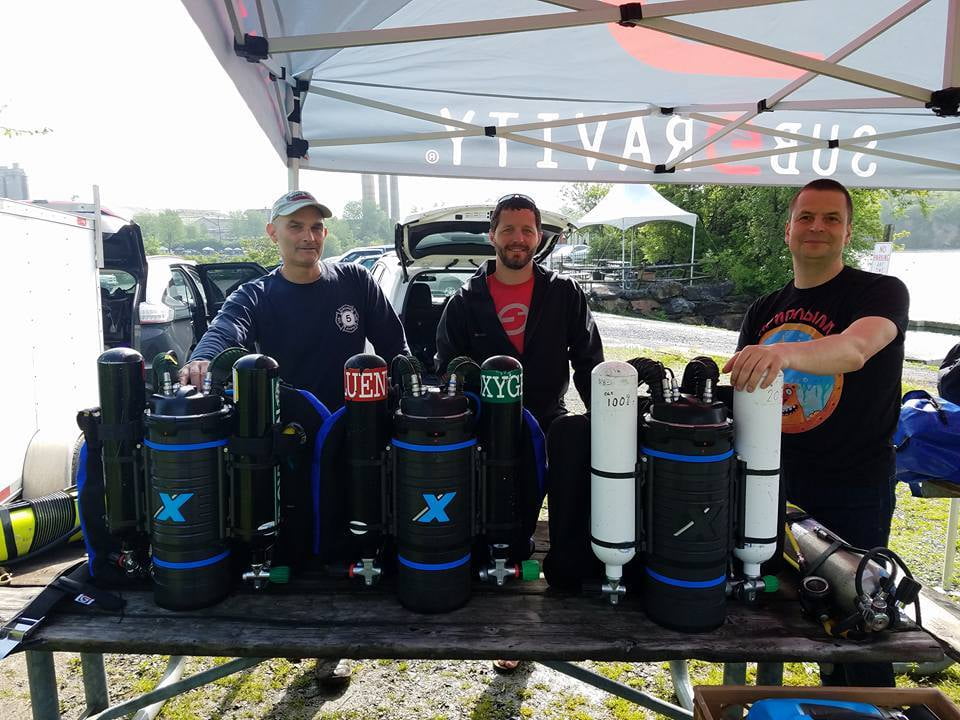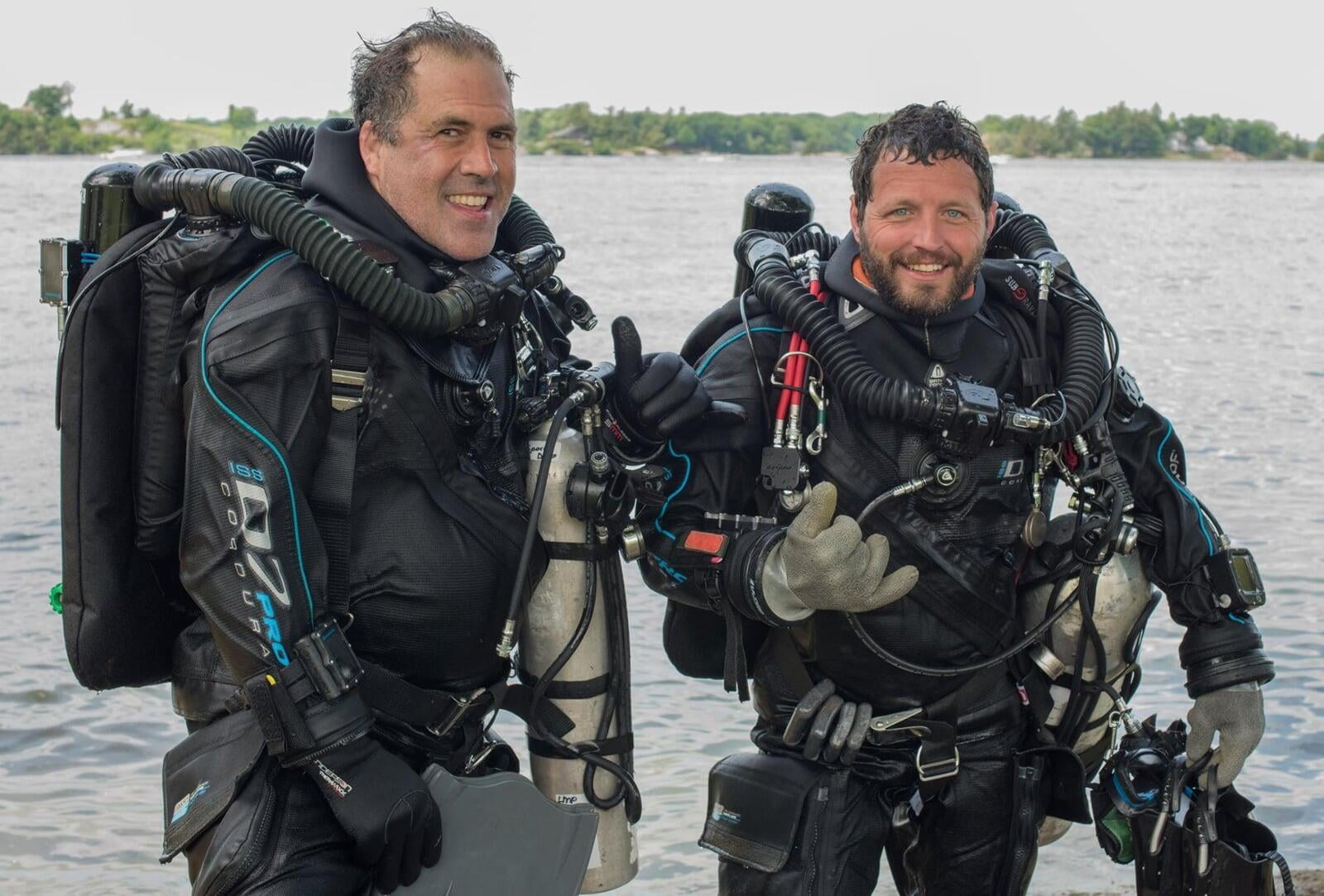There are so many rebreathers...how do I choose?
There are dozens of rebreathers on the market, all boasting certain features, some half the cost of others. Every diver prefers their unit and every instructor prefers the unit they teach. Do we have a bias? Absolutely - but here is some objective information peppered with the factors that made us biased.
2. Chances of a failure causing a missed dive
3. Support
Features that make it easier to use.
Ease of use features are something that's entered the market relatively recently. They aren't mission critical but take the "home-build" aspects away from your system. Assembling, calibrating and testing your unit faster and more efficiently makes you more confident and ready for the diving activities as well as makes troubleshooting possible errors simpler.
Example: X-CCR/Defender bayonet fittings
Chances of a failure.
There are an unlimited number of reasons a "working" rebreather will cause you to miss a dive, but differences in manufacturing can drastically reduce the number of dives you wait on the boat. Cleverly engineered parts, robust materials, and easily cleaned components go a long way in keeping your investment from failing checks and preventing a dive.
Example: X-CCR/Defender robust sensor cage and connections.
Support
One of the primary reasons for a rebreather is "bang for your buck". More diving and less surface interval. That means when your tool for diving needs a replacement part you need it ASAP. While this may seem like a given, the rebreather market and distribution system is relatively volatile. Our bias towards certain rebreathers takes support into account in a big way.
How does a rebreather work?
Rebreathers are like gas mixing machine you take underwater. They capture exhaled gas, remove CO2, and add oxygen. They are the perfect tool for photographers, deep divers and cave divers. We explain more here.

Let's separate the major players
The units out there with modern manufacturing, support, and training stand out. They're the first pick. Are they more expensive? Yes. But they aren't relics of the past and offer the user a positive diving experience.
| XCCR/Defender | Liberty | SF2 | JJ-CCR | |
| Pros |
|
|
|
|
| Cons |
|
|
|
|
| ISC Megladon/Tiburon | Fathom | Kiss Sidewinder | |
| Pros |
|
|
|
| Cons |
|
|
|

The other guys
You see other popular rebreathers out there that rely on legacy instead of function or innovation. These units still work, and have a lot of support - but they aren't modern units for a modern market. These units are commonly seen for sale (especially used) for a few thousand dollars. Because of the low entry cost many people see these units as a great entry level unit, later selling for a more modern unit. There is nothing wrong with an entry level purchase and a switch later except it doesn't actually add up financially. After new cells, repairs, training and wasted assembly/disassembly/cleaning time the finances for getting a used unit and upgrading later don't add up.
Why The X-CCR and Defender
We prefer the X-CCR and Defender - but why? Are we just as biased as any other instructors? Maybe, but there are some objective reasons why these are superior products.
Fittings
The canister, hoses, electronics, scrubber, cylinders and sensors are all quick connect fittings. This means checking for issues, assembly, disassembly and cleaning are significantly more efficient. No need for tools or awkward designs when getting your unit ready for the dive. This helps the X-CCR and Defender stand out from the competition.
Robust
These units offer hefty engineering that makes them plenty tough enough for the deepest wrecks, smallest caves or the offroad ride to the dive site in the back of your car. Funky bits or cheap tricks would easily break in the same conditions.
Electronics
The X-CCR and Defender use Shearwater electronics, like many other popular units. They're easy to see, quick to understand, and are coupled with the quick connect fittings for quick removal in the event a swap is needed.
Customization
The X-CCR and Defender come in a range of can sizes with multiple electronics and configuration options, suiting every diver's needs. Short canisters can accommodate shorter torso and the unit can be configured to fit a variety of different environments and conditions.

Time to Upgrade?
Are you already a rebreather diver ready to move to a different unit? We're proud to offer training on one of the best built and best supported units out there. Let's schedule a demo day so you can see what all the fuss is about!
